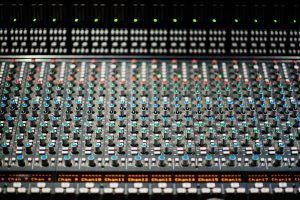RS-485, also known as TIA-485(-A), EIA-485, is a standard defining the electrical characteristics of drivers and receivers for use in serial communications systems. Electrical signaling is balanced, and multipoint systems are supported. The standard is jointly published by the Telecommunications Industry Association and Electronic Industries Alliance (TIA/EIA). Digital communications networks implementing the standard can be used effectively over long distances and in electrically noisy environments. Multiple receivers may be connected to such a network in a linear, multi-drop configuration. These characteristics make such networks useful in industrial environments and similar applications.
The EIA once labeled all its standards with the prefix “RS” (Recommended Standard), but the EIA-TIA officially replaced “RS” with “EIA/TIA” to help identify the origin of its standards. The EIA has officially disbanded, and the standard is now maintained by the TIA. The RS-485 standard is superseded by TIA-485, but often engineers and applications guides continue to use the RS-485 designation.
RS-485 supports inexpensive local networks and multidrop communications links, using the same differential balanced line over twisted pair as RS-422. It is generally accepted that RS-485 can be used with data rates up to 10 Mbit/s and distances up to 1,200 m (4,000 ft), but not at the same time. A rule of thumb is that the speed in bit/s multiplied by the length in meters should not exceed 108. Thus a 50-meter cable should not signal faster than 2 Mbit/s. Under some conditions, it can be used up to data transmission speeds of 64 Mbit/s.
In contrast to RS-422, which has a single driver circuit which cannot be switched off, RS-485 drivers use three-state logic allowing individual transmitters to be deactivated. This allows RS-485 to implement linear bus topologies using only two wires. The equipment located along a set of RS-485 wires are interchangeably called nodes, stations or devices. The recommended arrangement of the wires is a connected series of point-to-point (multi-dropped) nodes, i.e. a line or bus, not a star, ring, or multiple connected networks. Star and ring topologies are not recommended because of signal reflections or excessively low or high termination impedance. If a star configuration is unavoidable, special RS-485 star/hub repeaters are available which bidirectionally listen for data on each span and then retransmit the data onto all other spans.
Ideally, the two ends of the cable will have a termination resistor connected across the two wires. Without termination resistors, reflections of fast driver edges can cause data corruption. Termination resistors also reduce electrical noise sensitivity due to the lower impedance. The value of each termination resistor should be equal to the cable characteristic impedance (typically, 120 ohms for twisted pairs). Somewhere along with the set of wires, pull up or pull down resistors are established to fail-safe bias each data wire when the lines are not being driven by any device. This way, the lines will be biased to known voltages and nodes will not interpret the noise from undriven lines as actual data; without biasing resistors, the data lines float in such a way that electrical noise sensitivity is greatest when all device stations are silent or unpowered





